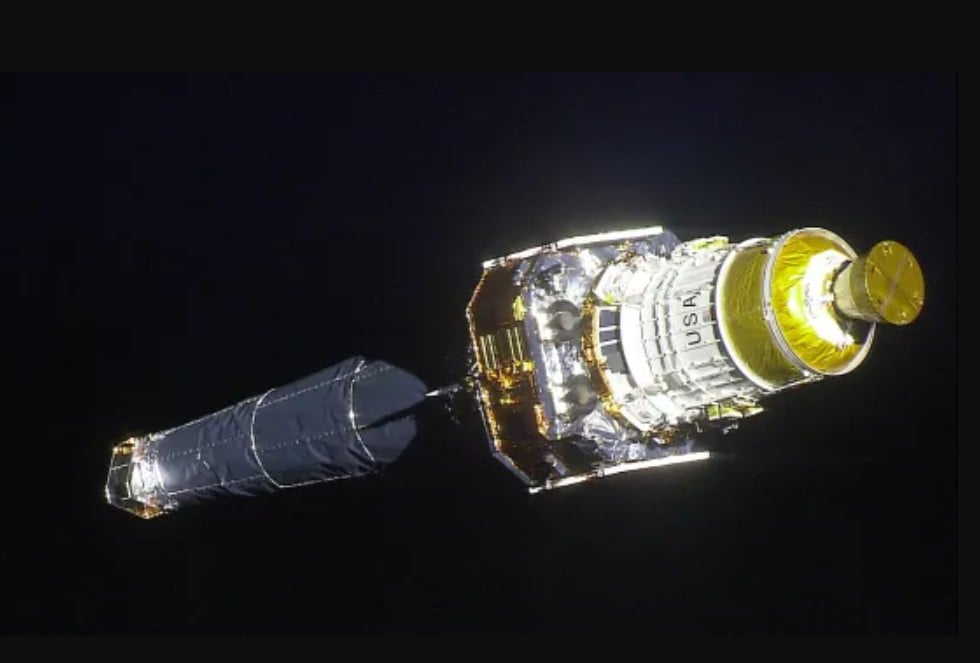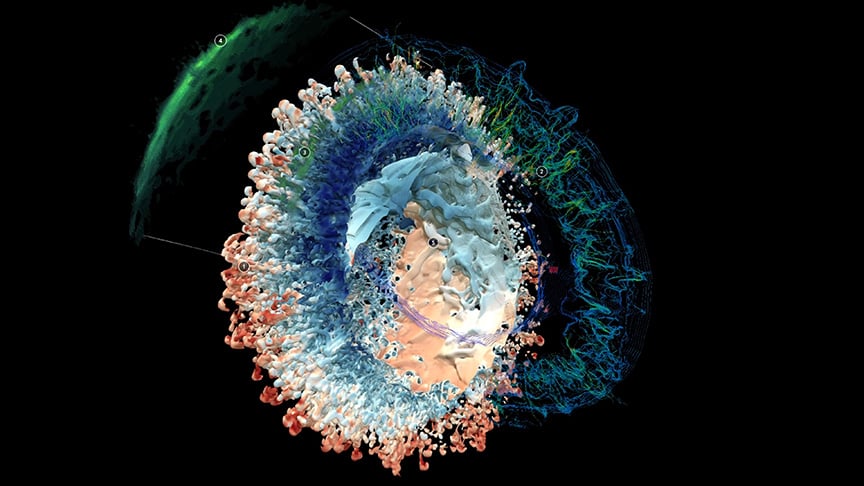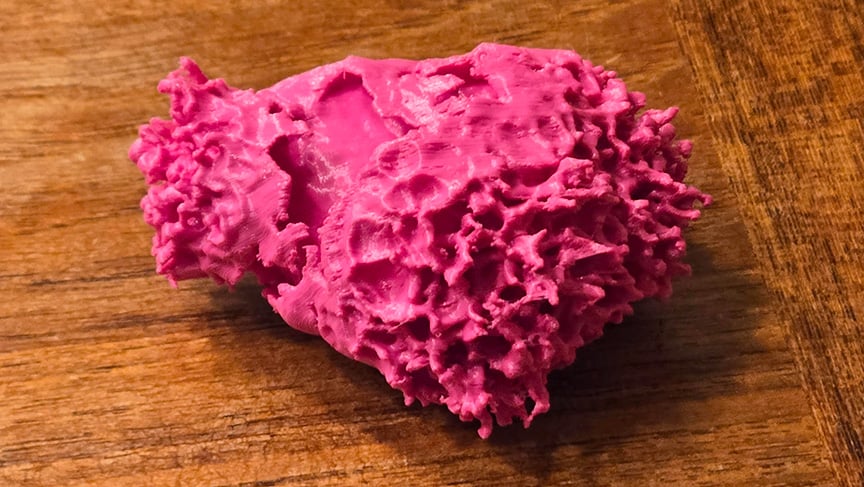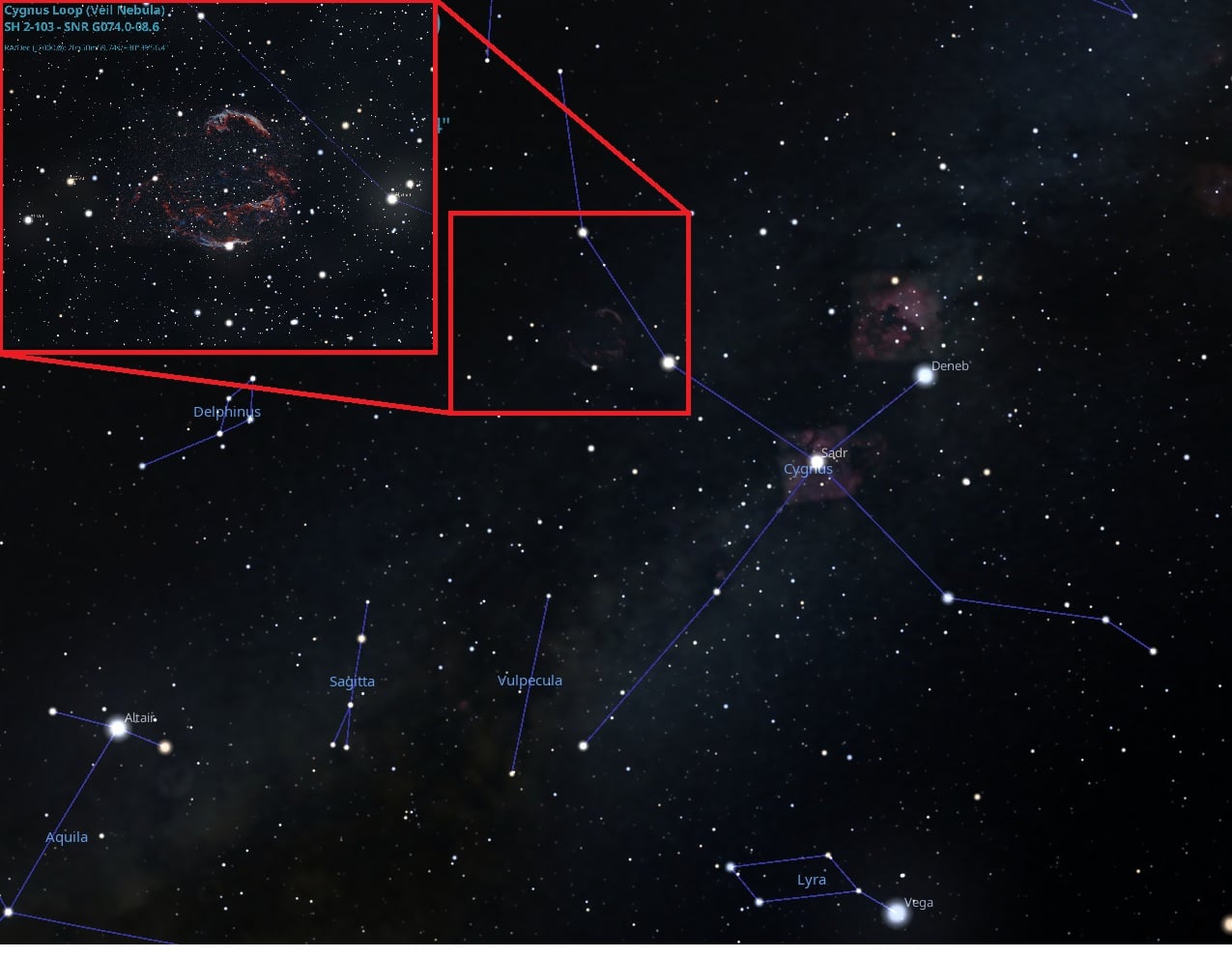A recent analysis gives us new views of key deep-sky objects.
It's a cosmic shame, that we tend to only see flat-looking, 2-dimensional views of deep-sky objects. And while we can't just zoom out past the Andromeda galaxy for another perspective, or see the Crab Nebula from another vantage point in space, we can use existing data to simulate objects in 3D.
A recent collection released by Marshall Space Flight Center's Chandra X-ray Center and the Harvard-Smithsonian Center for Astrophysics shows us familiar objects in a new way. These models combine information from space-borne observatories, including the Chandra X-ray observatory. Released from the payload bay of Space ShuttleColumbiaon STS-93, Chandra has proven itself over the last two decades as NASA's flagship X-ray observatory in space.
 *Chandra, shortly after deployment from shuttle Columbia's payload bay. Credit: NASA*
*Chandra, shortly after deployment from shuttle Columbia's payload bay. Credit: NASA*
The 3D renderings were made using a combination of observational data and computer simulations. The technique not only allows armchair observers to see old objects in new ways, but it also gives astronomers a method to study these familiar targets from all sides.
"These 3D models allow people to explore—and print—examples of stars in the early and end stages of their lives," states a recent Chandra X-ray Center (NASA)press release. "They also provide scientists with new avenues to investigate scientific questions and find insights about the objects they represent."
NASA is even providing users with the files to 3D print these deep-sky objects, free to download. This gives a tactile dimension to the sky, something the user can hold and feel. This is an important factor when it comes to science outreach… after all,noneof us can see the sky at x-ray wavelengths.
Here's the highlighted object-by-object breakdown:
Cassiopeia A: Located about 11,000 light-years distant, Cassiopeia A or Cas A is a well-studied supernovae remnant. A prodigious x-ray and radio source, Cas A hosted the last known galactic supernovae about 340 years ago, although no definitive observations of the event exist.
 Cas A, to include the 'Green Monster' loop. Credit: INAF-Osservatorio Astronomico di Palermo/Salvatore Orlando.
Cas A, to include the 'Green Monster' loop. Credit: INAF-Osservatorio Astronomico di Palermo/Salvatore Orlando.
More recently, the James Webb Space Telescope (JWST) has documented what's become known as the 'green monster', a long oxygen-rich filament extending from Cas A. This may provide more insight into this young and evolving remnant.
 *A 3D printed rendition of Cas A. Credit: NASA/CXC/SAO/A. Jubett & N. Wolk/Modeled by Sal Orlando*.
*A 3D printed rendition of Cas A. Credit: NASA/CXC/SAO/A. Jubett & N. Wolk/Modeled by Sal Orlando*.
BP Tauri: This is a young T Tauri star surrounded by a dust ring, just 10 million years old. T Tauri stars are crucial to our understanding of stellar and solar system formation, as they provide a snapshot of the early stages of the process. These are also very energetic and active stars, with flares that sculpt the surrounding cocoon of dust that the stars are embedded in. BP Tauri and the x-ray flares it produces are of primary interest to Chandra researchers.
The Cygnus Loop: This is a familiar target for deep-sky imagers located in the constellation of Cygnus, the Swan. Another, more ancient supernovae remnant, the Cygnus Loop has since undergone a complex interaction with the interstellar medium, allowing Chandra to probe this domain as the residual blast wave is heated to millions of degrees. The Cygnus Loop is an extended object visually extending over three degrees across, about six times the angular diameter of the Full Moon.
 The location of the Cygnus Loop in the sky. Credit: Stellarium.
The location of the Cygnus Loop in the sky. Credit: Stellarium.
G 292.0+1.8: The last selected object is an obscure but crucial one.G 292.0+1.8 is another supernovae remnant, located in the constellation Centaurus the Centaur. Astronomers are interested in this remnant for two main reasons: One, it is usually rich in molecular oxygen. Two, it exhibits a rare, reverse shock wave rebounding back towards the original explosion, giving the remnant an asymmetrical shape.
These 3D models were also highlighted in studies out of the Italian Institute for Astrophysics(INAF) in Palermo Italy by Salvatore Orlando and cited in papers from theMonthly Notices of the Royal Astronomical Society,The Astrophysical JournalandAstronomy & Astrophysics.
Who doesn't want a 3D rendition of the Cygnus Loop on their desktop? For now, it's the next best thing to going there in person.
 Universe Today
Universe Today
